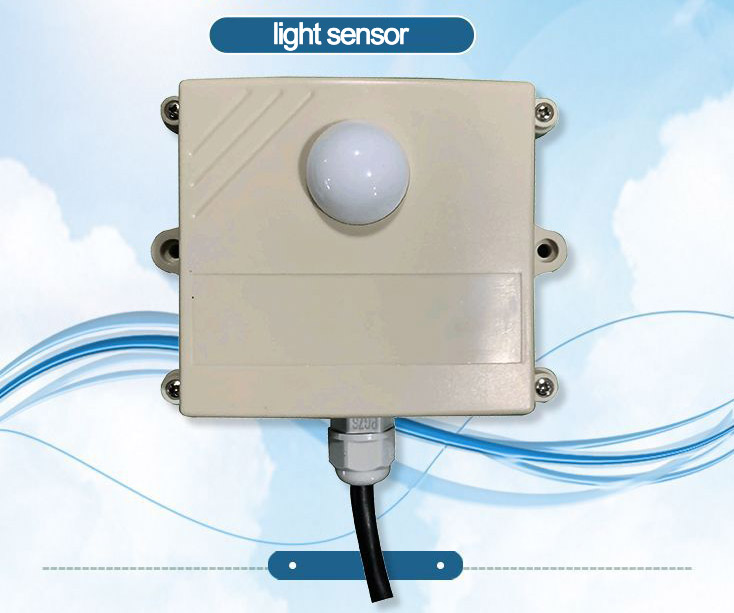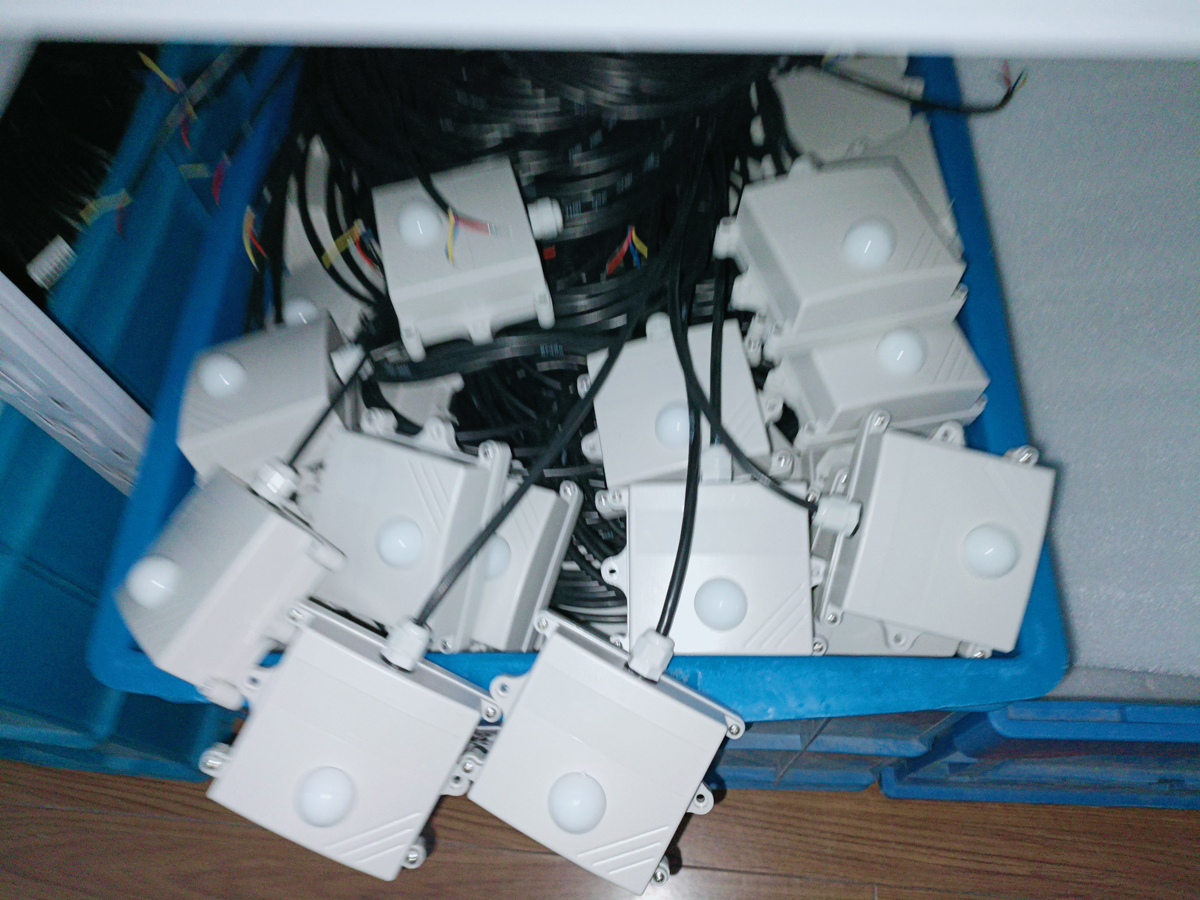

— Blogs —
—Products—
 Consumer hotline +8618073152920
Consumer hotline +8618073152920 WhatsApp:+8615367865107
Address:Room 102, District D, Houhu Industrial Park, Yuelu District, Changsha City, Hunan Province, China
Product knowledge
Time:2024-05-19 10:21:35 Popularity:1131
Light is one of the most important factors for plant growth, and precise light control is vital for crops in agricultural greenhouses. And light level sensor is one of the important tools to realize this goal.
The greenhouse light level sensor is a device used to monitor the light intensity inside the greenhouse, using a highly sensitive silicon blue photovoltaic detector as the sensor. It measures the amount of light energy to help farmers or greenhouse managers understand the light conditions received by their crops, so that they can better control the environment inside the greenhouse and optimize the growing environment for their crops. Users can configure different ranges according to different measuring places, featuring wide measuring range, good linearity, good waterproof, easy installation and suitable for long-distance transmission. Can be widely used in agricultural greenhouses, city lighting and other places.

Illumination sensor technical parameters:
| Measuring range: | 0-200000Lux |
| Wavelength range: | 380 nm-730 nm |
| Accuracy: | ±7% |
| Power supply: | DC 12V-24V |
| output | 4~20mA/ 0~5V/ RS485 |
| Instrument cable length: | 2.5 meters |
| Working temperature: | -10℃~70℃ |
| Relative humidity: | 0~80%RH |
| Product weight: | 170 g |
Illuminance sensor plays a vital role in the precise light control of agricultural greenhouses. The following is the exploration of its importance:
1. Light demand monitoring:
Different crops have different needs for light, and light level sensors can help farmers monitor the light intensity in the greenhouse to ensure that the crops get the right light.
Monitor the balance between natural and artificial light so that the intensity and duration of artificial light can be adjusted when necessary.
2. Photoperiod control:
Certain crops require specific photoperiods (i.e. cycles of light and darkness) to grow well. Illuminance sensors can help achieve precise photoperiod control.
By controlling shade nets, adjusting lights, etc., the photoperiod conditions required by the crop are simulated.
3. Energy saving:
Illuminance sensors can avoid over-illumination and reduce energy waste.
When natural light is sufficient, the use of artificial light sources is reduced, reducing power consumption and operating costs.
4. Growth condition monitoring:
The data provided by light level sensors can help monitor crop growth conditions and analyze areas that are under- or over-illuminated.
Combined with other sensor data (e.g., temperature, humidity, etc.), it provides a more comprehensive monitoring of the crop growing environment.
5. Pest and disease prevention:
Excessive or variable light conditions can lead to crop pests and diseases.
Illuminance sensors can help detect and prevent these problems in time, reducing the use of chemical pesticides.
6. Improved crop quality:
Proper light conditions help improve crop quality such as color, taste and nutritional value.
Light level sensors help achieve this by ensuring that crops are grown under optimal light conditions.
7. Adaptability:
Light level sensors can adapt to different seasons and weather conditions to provide stable light conditions.
In cloudy, cloudy or winter light conditions, the light level sensor can help compensate for the lack of light.
In addition to applications in agricultural greenhouses, light level sensors have the following application scenarios in agriculture:
Farmland environmental monitoring: light intensity sensors can be used for environmental monitoring of farmland to help farmers understand the light conditions of farmland, providing data support for crop growth.
Crop physiological research: Light intensity is one of the important factors affecting crop growth and development. Through the measurement of light intensity sensor, you can understand the different light conditions of the crop physiological indicators of change, for crop physiology and ecology research to provide an important basis.

In conclusion, light level sensors play a key role in precise light control in agricultural greenhouses, which not only helps to improve crop yield and quality, but also realizes energy saving, emission reduction and environmental protection. By rationally configuring and regulating light, the most suitable environment for crop growth can be created to promote the development of modern agriculture.
Related recommendations
Sensors & Weather Stations Catalog
Agriculture Sensors and Weather Stations Catalog-NiuBoL.pdf
Weather Stations Catalog-NiuBoL.pdf
Related products
 Combined air temperature and relative humidity sensor
Combined air temperature and relative humidity sensor Soil Moisture Temperature sensor for irrigation
Soil Moisture Temperature sensor for irrigation Soil pH sensor RS485 soil Testing instrument soil ph meter for agriculture
Soil pH sensor RS485 soil Testing instrument soil ph meter for agriculture Wind Speed sensor Output Modbus/RS485/Analog/0-5V/4-20mA
Wind Speed sensor Output Modbus/RS485/Analog/0-5V/4-20mA Tipping bucket rain gauge for weather monitoring auto rainfall sensor RS485/Outdoor/stainless steel
Tipping bucket rain gauge for weather monitoring auto rainfall sensor RS485/Outdoor/stainless steel Pyranometer Solar Radiation Sensor 4-20mA/RS485
Pyranometer Solar Radiation Sensor 4-20mA/RS485
Screenshot, WhatsApp to identify the QR code
WhatsApp number:+8615367865107
(Click on WhatsApp to copy and add friends)
